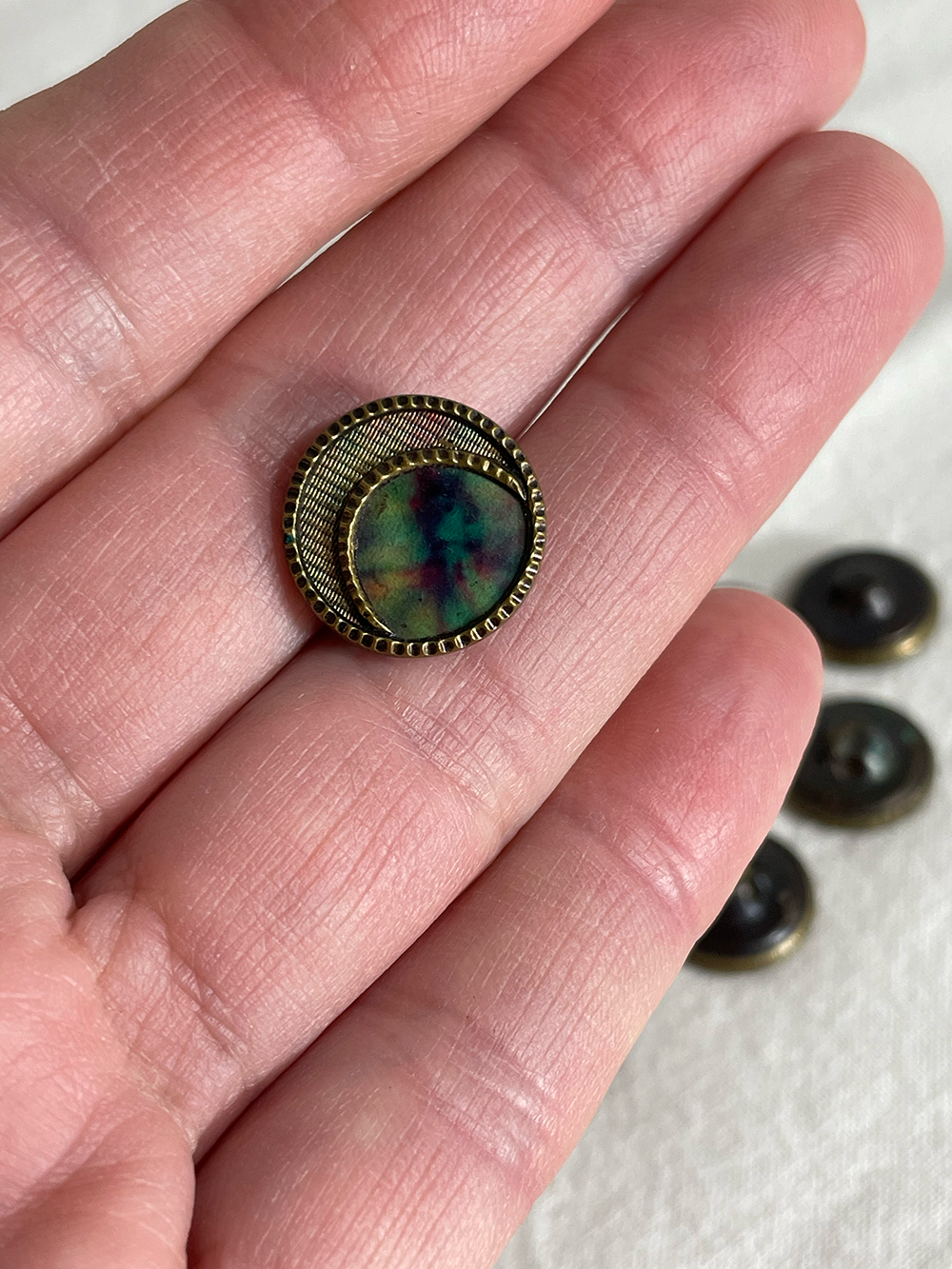 Image 1 of 6
Image 1 of 6

 Image 2 of 6
Image 2 of 6

 Image 3 of 6
Image 3 of 6

 Image 4 of 6
Image 4 of 6

 Image 5 of 6
Image 5 of 6

 Image 6 of 6
Image 6 of 6







Antique Victorian Marcasite Celluloid pair of buttons
Two antique Victorian buttons each with metal base with metal shank, holding a round marcasite over goldish celluloid face.
One has a blueish finish, the other silverish. The effect is a modernist and somewhat industrial looking flower.
Marcasite was used by the Greeks, Egyptians and Inca for centuries. It could be polished to create a brilliant and sparkly surface. Also called "Fool's Gold", marcasite came to be used a lot during the mid-19th century and through the Art Deco era of the 1920s.
Each button is approximately 1 inch or 40 mm diameter and 4 mm deep.
Listing is for the pair (2) of buttons.
Two antique Victorian buttons each with metal base with metal shank, holding a round marcasite over goldish celluloid face.
One has a blueish finish, the other silverish. The effect is a modernist and somewhat industrial looking flower.
Marcasite was used by the Greeks, Egyptians and Inca for centuries. It could be polished to create a brilliant and sparkly surface. Also called "Fool's Gold", marcasite came to be used a lot during the mid-19th century and through the Art Deco era of the 1920s.
Each button is approximately 1 inch or 40 mm diameter and 4 mm deep.
Listing is for the pair (2) of buttons.


























